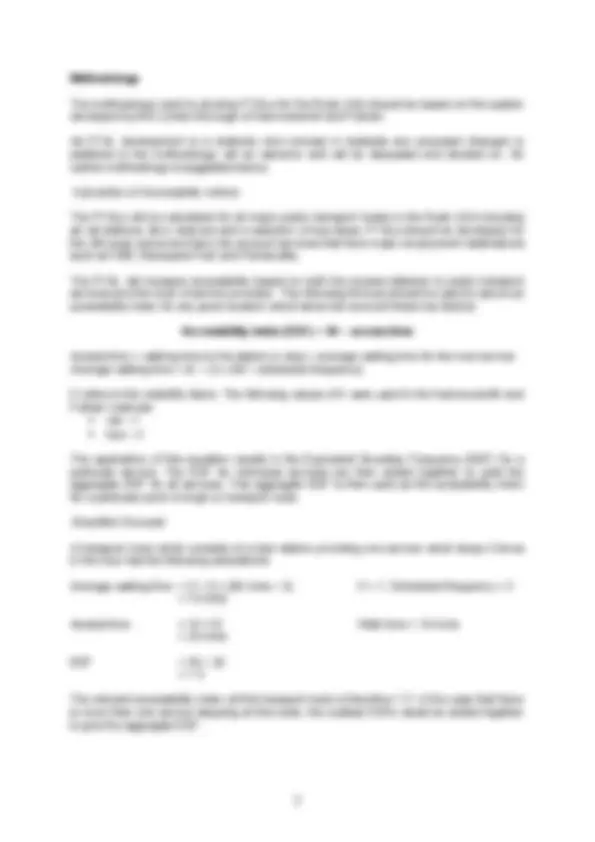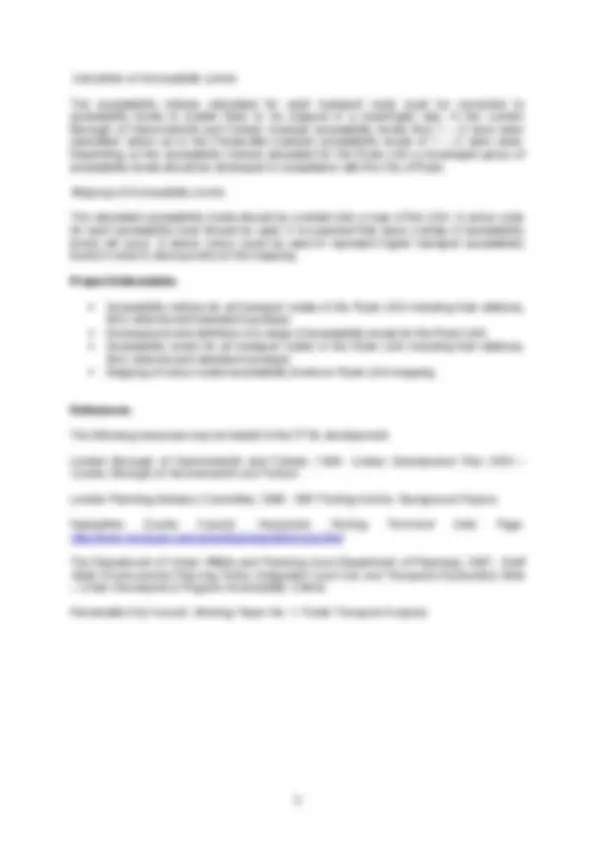




Study with the several resources on Docsity

Earn points by helping other students or get them with a premium plan


Prepare for your exams
Study with the several resources on Docsity

Earn points to download
Earn points by helping other students or get them with a premium plan
Community
Ask the community for help and clear up your study doubts
Discover the best universities in your country according to Docsity users
Free resources
Download our free guides on studying techniques, anxiety management strategies, and thesis advice from Docsity tutors
The process of developing public transport accessibility levels (ptals) for the city of ryde in australia. Ptals are used to measure public transport accessibility based on access time and level of service. The methodology used is based on the system developed by the london borough of hammersmith and fulham. The ptals will be calculated for all major public transport nodes and used as a basis for parking standards and development densities. A simplified example of how to calculate the equivalent doorstep frequency (edf) and convert it to an accessibility level.
Typology: Study notes
1 / 4

This page cannot be seen from the preview
Don't miss anything!



Brief for Development Public Transport Accessibility Levels (PTALs)
Introduction
The City of Ryde has developed a clear policy objective of reducing car use within the LGA and the wider metropolitan area through the Ryde Integrated Transport Strategy. Council is pursuing a number of projects and initiatives aimed at achieving this policy objective, including the development of Public Transport Accessibility Levels (PTALs) for the Ryde LGA. PTAL analysis will be used as a basis for the development of car parking provision rates and recommending development densities for the Ryde LGA.
Background
The PTAL calculation was originally developed by the London Borough of Hammersmith and Fulham (UK), and was later adopted by Transport for London as the standard method for calculation of public transport access in London.
A PTAL is a measure of public transport accessibility 1 , reflecting:
These components are used to calculate a public transport accessibility index that is then allocated into bands (in the London Borough of Hammersmith and Fulham study) from 1 to 6, where 1 indicates very poor accessibility and 6 indicates excellent levels of accessibility.
Within London (UK) the PTAL is used as a development planning tool to determine permitted parking standards and development densities. Parramatta City Council has also developed PTALs for their LGA and has based their emerging Residential Development Strategy on PTALs.
Objectives
Project Outcomes
It is anticipated that a future land use and parking strategy based on PTALs would be developed and would result in:
(^1) Definition from, London Travel Report, TfL (2005)
Calculation of Accessibility Levels
The accessibility indices calculated for each transport node must be converted to accessibility levels to enable them to be mapped in a meaningful way. In the London Borough of Hammersmith and Fulham example accessibility levels from 1 – 6 have been calculated where as in the Parramatta example accessibility levels of 1 – 4 were used. Depending on the accessibility indices calculated for the Ryde LGA a meaningful group of accessibility levels should be developed in consultation with the City of Ryde.
Mapping of Accessibility Levels
The calculated accessibility levels should be overlaid onto a map of the LGA. A colour code for each accessibility level should be used. It is expected that some overlap of accessibility levels will occur. A darker colour could be used to represent higher transport accessibility levels in order to show priority on the mapping.
Project Deliverables
References
The following resources may be helpful in the PTAL development.
London Borough of Hammersmith and Fulham, 1994. Unitary Development Plan 2003 – London Borough of Hammersmith and Fulham.
London Planning Advisory Committee, 1998. 1997 Parking Advice: Background Papers.
Hampshire County Council. Hampshire Parking Technical Data Page. http://www.hants.gov.au/carparking/maps/technical.html
The Department of Urban Affairs and Planning (now Department of Planning), 2001. Draft State Environmental Planning Policy (Integrated Land Use and Transport) Explanatory Note
- Urban Development Program Accessibility Criteria.
Parramatta City Council. Working Paper No. 1: Public Transport Analysis.